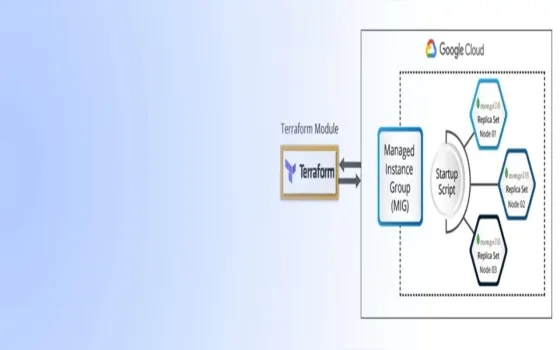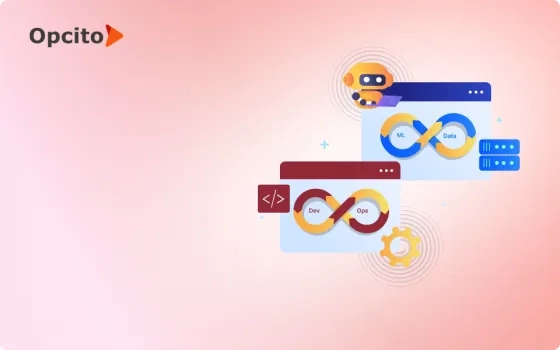The constant pressure to deliver high-quality software at an accelerated pace is not a new ask. It has become the norm and target of the software industry. Agile methodologies have become the go-to approach for many teams, enabling iterative development and flexibility in responding to changing requirements. However, security cannot be an afterthought in an era of increasing cyber threats. This is where DevSecOps comes into play.
Initially, DevSecOps and Agile methodologies may seem to point in different directions. However, they are more complementary than contradictory. Agile methodology emphasizes flexibility and adaptability in software development, while DevSecOps integrates automated security measures into the development pipeline.
How does DevSecOps work with Agile?
When organizations adopt DevSecOps practices alongside Agile principles, their goal is to enhance the development processes by emphasizing efficiency, security, and collaboration. While Agile focuses on iterative development and continuous improvement, DevSecOps ensures that security is seamlessly integrated at every stage of the development lifecycle. Despite their differing emphases within the delivery cycle, both Agile and DevSecOps share common objectives of breaking down silos, fostering collaboration and teamwork, and facilitating faster delivery of software products.
Moreover, incorporating Agile practices enhances the alignment between business priorities and DevSecOps continuous release cycles. By prioritizing tasks and fostering collaboration, Agile methodologies ensure that development efforts are coordinated and transparent. This integration allows for better planning and visibility throughout the delivery cycle, enabling teams to respond effectively to changing requirements and deliver high-quality software efficiently.
Let's break them down further and look at Agile and DevSecOps.
Understanding the role of Agile
Agile transformation involves adopting Agile principles and practices across an organization. It enables teams to deliver software in minor, incremental releases, allowing quick feedback and adaptation to changing requirements. Agile fosters collaboration, transparency, and flexibility, essential in today's dynamic business environment.
- Iterative development: Agile methodologies are characterized by iterative development, where projects are divided into smaller, manageable increments known as sprints.
- Cross-functional collaboration: Within these sprints, cross-functional teams collaborate closely to deliver functioning software at the end of each iteration.
- Continuous feedback: This iterative approach allows continuous feedback loops, providing opportunities for constant improvement and course correction throughout the development process.
- Customer-centric approach: Agile methodologies prioritize customer satisfaction by delivering business value and adapting to evolving customer needs. By involving customers early and often, Agile teams ensure that the delivered product meets the customer's expectations, fostering a customer-centric approach to software development.
Understanding the role of DevSecOps
DevSecOps extends the DevOps principles of collaboration, automation, and integration by incorporating security throughout the development process. Instead of treating security as a separate phase, DevSecOps integrates security practices at all phases seamlessly into Agile methodologies, ensuring that security is prioritized from the outset. In the end, they have a common goal - speed.
- Shift left: DevSecOps emphasizes shifting security practices to the left, meaning integrating security considerations early in the software development process, starting from the planning and design phases. This helps identify and mitigate security risks as early as possible, reducing the cost and effort of addressing them later in the development lifecycle.
- Automation: Automation is crucial for implementing security controls consistently and efficiently across the development pipeline. Automated security testing, code analysis, and deployment checks enable rapid feedback on security vulnerabilities, allowing teams to address them quickly.
- Collaboration and shared responsibility: DevSecOps emphasizes collaboration and shared responsibility among development, security, and operations teams. By breaking down silos and creating a culture of collaboration, teams can collectively address security concerns and ensure that security is everyone's responsibility.
- Continuous education and learning: Given the evolving nature of security threats and technologies, DevSecOps promotes continuous education and learning among team members. This includes staying updated on emerging security trends, best practices, and tools to enhance applications' security posture effectively.
Best practices to integrate DevSecOps into Agile methodologies
Let’s look at the best practices that you must stick to:
- Cross-functional collaboration: Encourage collaboration between development, operations, and security teams. By breaking down silos and fostering communication, teams can work together to identify and address security concerns early in the development process.
- Automated security testing: Implement automated security testing tools within the CI/CD pipeline. Static code analysis, dynamic application security testing (DAST), and container security scanning can help identify vulnerabilities early and ensure that security is integrated into the code from the start.
- Secure coding practices: Enforce secure coding practices and incorporate security code reviews into the Agile development process. By empowering developers to write secure code, organizations can reduce the risk of security vulnerabilities in the software.
- Continuous monitoring and compliance: Implement continuous monitoring and compliance checks to detect security threats and ensure compliance with security policies and regulations. Organizations can identify and respond to security incidents in real-time by continuously monitoring production environments.
- Shift left security: Adopt a "shift left" approach to security, where security considerations are addressed early in the development lifecycle. Organizations can proactively identify and mitigate security risks by integrating security into the design phase and conducting threat modelling exercises.
- Training and awareness: Provide ongoing security training and awareness programs for all team members. By educating employees about security best practices and raising awareness about potential threats, organizations can create a culture of security within the organization.
Why consider Agile transformation with DevSecOps
By integrating DevSecOps practices into Agile methodologies, organizations can realize several benefits. Identifying and addressing security issues early in the development process facilitates accelerated software delivery. This proactive approach empowers organizations to streamline their workflows and deliver high-quality software at a faster pace. Furthermore, embedding security into every stage of the development process enhances the organization's security posture. By seamlessly integrating security practices, companies can actively reduce the risk of security vulnerabilities and fortify their defences against potential threats.
Integrating security into development processes also improves collaboration, which creates a culture of shared responsibility for security between development, operations, and security teams. This collaborative approach ensures that security exists in all aspects of software development, from initial design to deployment and maintenance. Embracing Agile principles and practices helps organizations achieve greater flexibility and adaptability. Agile methodologies empower teams to respond swiftly to changing requirements and market dynamics, ensuring that software remains competitive in today's fast-paced environment. By continuously iterating and refining their processes, organizations stay ahead of the curve and deliver innovative solutions that meet evolving customer needs while upholding robust security standards.
Embrace Agile-DevSecOps integration for optimized software delivery
Embracing the synergy of Agile and DevSecOps isn't just about meeting the demands of modern software development. It is also about setting a new standard while maintaining the highest level of security possible. By blending the dynamicity of Agile with the security-first mindset of DevSecOps, organizations deliver faster and build safer, more resilient software ecosystems. The mindset shift will propel your team towards innovation, collaboration, and success in an ever-evolving digital landscape.



























